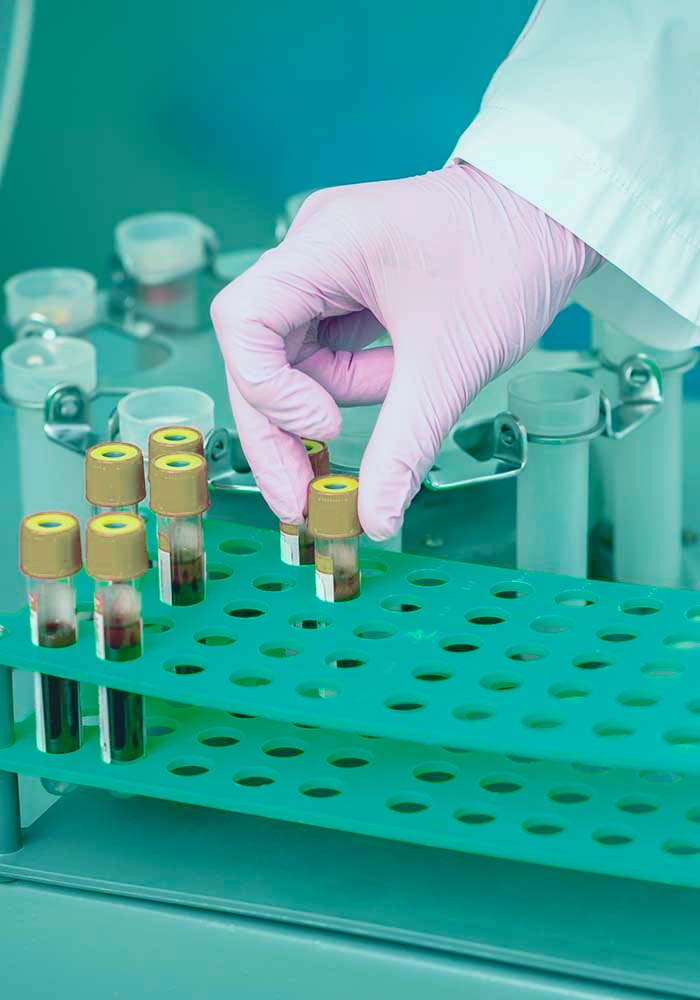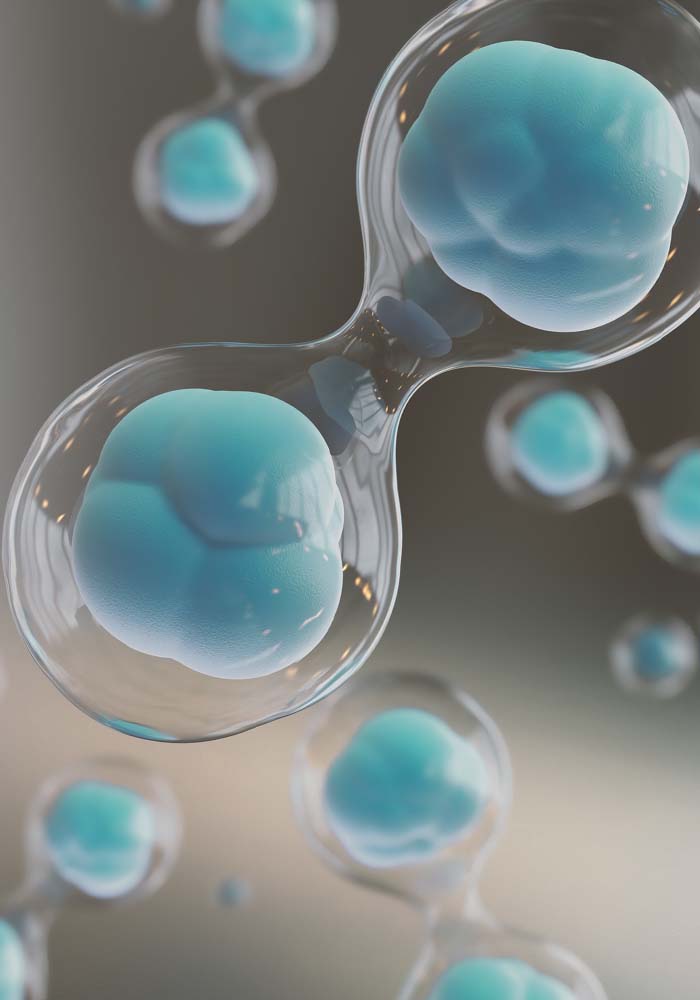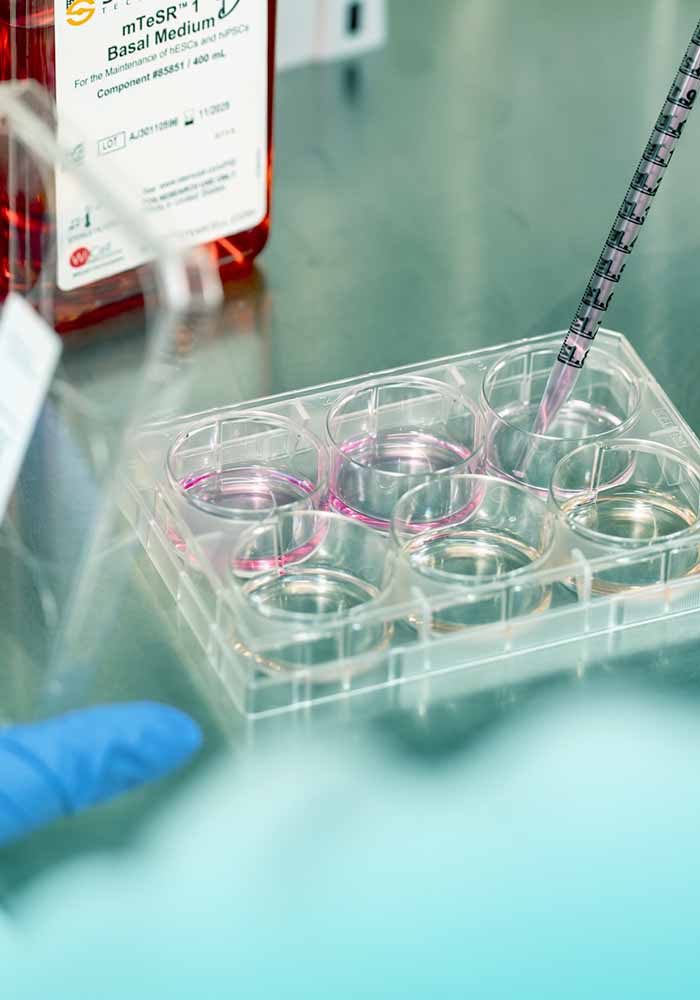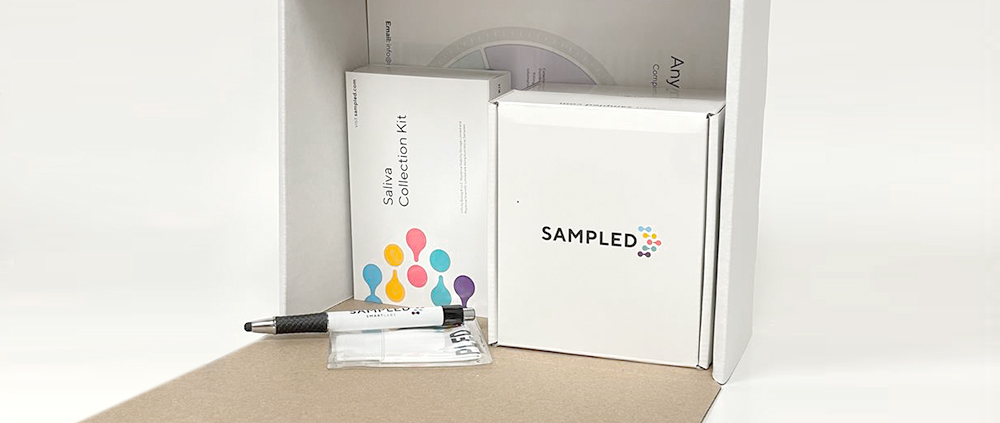Cellular Services
Sampled provides an array of essential cellular services for academic and industry research, encompassing histology, cell sample processing, and induced pluripotent stem cell (iPSC) services.

Cell Sample Processing
Sampled’s iPSC services offer a versatile range of solutions for researchers:
- iPSC Reprogramming: Efficiently transform differentiated cells into iPSCs, backed by robust QC.
- iPSC Gene Editing: Precise modifications using Clustered Regularly Interspaced Short Palindromic Repeats (CRISPR)-Cas9 technology, with a free control line.
- iPSC Expansion: We can expand your iPSCs to ensure that you never run out of vials.
- Neural Progenitor Cell (NPC) Differentiation: Induce iPSCs into NPCs with thorough QC and readily available cells in stock.
- iPSC QC: Comprehensive QC for high-quality iPSC products, supporting research endeavors.

iPSC Services
Sampled’s iPSC services offer a versatile range of solutions for researchers:
- iPSC Reprogramming: Efficiently transform differentiated cells into iPSCs, backed by robust QC.
- iPSC Gene Editing: Precise modifications using Clustered Regularly Interspaced Short Palindromic Repeats (CRISPR)-Cas9 technology, with a free control line.
- iPSC Expansion: We can expand your iPSCs to ensure that you never run out of vials.
- Neural Progenitor Cell (NPC) Differentiation: Induce iPSCs into NPCs with thorough QC and readily available cells in stock.
- iPSC QC: Comprehensive QC for high-quality iPSC products, supporting research endeavors.
Sampled provides personalized iPSC services to meet specific client needs, encompassing iPSC reprogramming, gene editing, expansion, QC, and NPC differentiation. The iPSC reprogramming service accommodates various source materials with timelines ranging from 3-6 months. iPSC gene editing is customized to client specifications, involving advanced methods and QC checks. Expansion involves expanding and storing many vials of high-quality iPSCs. NPC differentiation services are tailored to client requirements, with a 3-4 month turnaround for 16-20 vials of neural progenitor cells. Additionally, Sampled offers diverse QC options for iPSCs to ensure client preferences are met.

Histology
Histology plays a pivotal role in clinical and academic studies, offering insights into tissue anatomy, cell constituents, and marker expression. At Sampled, our comprehensive histological processing service aids in understanding your sample, from primary biopsy to expertly imaged slides and analysis, streamlining the entire histology pipeline.
Samples are received, cataloged, stored, and processed by fixing, permeabilizing, embedding, sectioning, and staining. High-quality 40X digital images are captured using Olympus VS120 microscopes and securely stored for analysis. Following imaging, samples can be stored, returned to the client, or sent for analysis by a pathologist, allowing flexibility to match client needs at any stage of the process.

Cell Line Repositories
Sampled is the sole host and distributor of key biospecimen collections to scientists for a number of publicly available biorepositories. Biomaterials can be requested by scientists from small academic groups all the way up to large pharmaceutical organizations.
The samples in the publicly available biorepositories at Sampled have been collected, expanded, and stored with the intent of making them available to the wider scientific community for their research. Samples have been built over many years and come from sources like national institutes, research foundations, and companies.
Why Use Sampled’s Cellular Services?
Expertise
Benefit from our team’s technical excellence and experience in performing challenging techniques and ensuring accurate sample processing and downstream analysis. Sampled’s team has vast expertise in every service we offer, meaning our clients are always getting the best possible service.
Time- and Cost-Efficiency
Outsourcing to Sampled saves valuable time and resources. By entrusting us with your projects, you can focus on your core research while experts efficiently process your samples using state-of-the-art equipment.
Physical and Technological Capacity
Our expansive capacity, coupled with automation, guarantees rapid processing of a large number of samples. At Sampled, we ensure that your samples are always maintained in the appropriate conditions during storage and processing to help achieve the best results. Sampled caters to diverse tissue sources and application needs, using appropriate techniques for specific tissue types. Our cutting-edge instrumentation, operated by experts, means our clients are getting the best possible service.
Quality Control and Security
Our stringent QC processes are tailored to your needs, ensuring experiment reliability and precision. Sampled offers dedicated cell banks, ascertaining that your cell samples are stored safely while giving our clients access to reliable and validated cell lines on demand. Sample security is maintained by our extensive documentation system and mandatory chain of custody records.
Cellular Services Applications
Sampled’s cellular services cover a wide range of potential applications in non-profit and for-profit research environments.
- Research studies
- Drug discovery
- Biomarker discovery
- Population health studies
- Cell biology research
- Immunology research
- Development modeling
- Agrigenomics
- Pharmacogenomics
Cellular Services Input Requirements
At Sampled, our cellular services process a huge array of source materials which varies between each service:
Cell Sample Processing
- For our PBMC isolation and LCL generation services we can work with any whole blood sample.
- For cell line expansion, we can work with any cell line (at least 1 million cells/vial).
- For our fibroblast services, the input requirement is a skin punch (2-4 mm2 section of skin).
iPSC Services
- Whole blood
- PBMCs
- LCLs
- Fibroblasts
- iPSCs generated in-house or sent by our clients
Histology
Our team is happy to receive samples from any stage of the histology pipeline which includes:
- Biopsies
- Paraffin embedded samples
- Sectioned and mounted samples
- Pre-stained samples
Find out more about Sampled’s cellular services
Interested in outsourcing your cellular services? Get in touch with one of our experts today to discover how Sampled’s huge range of cellular services can help you expedite your research projects.

